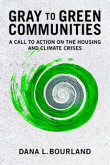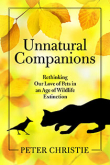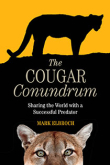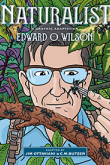The pace, intensity, and scale at which humans have altered our planet in recent decades is unprecedented. We have dramatically transformed landscapes and waterways through agriculture, logging, mining, and fire suppression, with drastic impacts on public health and human well-being. What can we do to counteract and even reverse the worst of these effects? Restore damaged ecosystems.
The Primer of Ecological Restoration is a succinct introduction to the theory and practice of ecological restoration as a strategy to conserve biodiversity and ecosystems. In twelve brief chapters, the book introduces readers to the basics of restoration project planning, monitoring, and adaptive management. It explains abiotic factors such as landforms, soil, and hydrology that are the building blocks to successfully recovering microorganism, plant, and animal communities. Additional chapters cover topics such as invasive species and legal and financial considerations. Each chapter concludes with recommended reading and reference lists, and the book can be paired with online resources for teaching.
Perfect for introductory classes in ecological restoration or for practitioners seeking constructive guidance for real-world projects, Primer of Ecological Restoration offers accessible, practical information on recent trends in the field.
"Holl (Univ. of California, Santa Cruz) has crafted a useful introduction to the science and practice of ecological restoration for students and aspiring restoration ecologists.... All libraries should include it in their collections."
Choice
"Karen Holl’s Primer is an excellent review of the discipline. It is concise without cutting corners, comprehensive in its treatment of the subject, and honest in its description of what constitutes good restoration practice …. Overall, the Primer presents a thorough and uncompromising blueprint for developing and executing the best restoration."
Natural Areas Journal
"In the Primer of Ecological Restoration, Dr. Holl shines as someone who clearly understands the field of ecological restoration well. Covering a range of topics related to the process of ecological restoration, Dr. Holl takes the reader through the various stages of ecological restoration and provides just enough information to appreciate why each step is meaningful and why it deserves attention."
Bulletin Journal | Ecological Society of America
"In the Primer Karen clearly lays out the steps necessary to effect better restoration projects. The Chapters are short, full of useful information, with valuable Recommended Reading at the end of each Chapter…. I have no doubt that the Primer will be used as the foundation for academic and professional courses on ecological restoration leading to better engagement between ecologists and practitioners in group projects."
Biodiversity and Conservation
"This book is a successfully executed primer that meets its stated goals admirably for such a short text. Combined with the online resources, it is likely most useful for instructors who assign additional readings to expand on different concepts pertinent to their courses. As it is well written and generally free of jargon (and fashioned with an excellent glossary), the primer would also be a valuable introduction for junior practitioners or interested members of the public. If you are new to ecological restoration, this is a solid introductory text."
Canadian Field Naturalist
"The concise framework introduced by this volume provides a solid approach to restoration that can and should be applied in the vast majority of cases…. [It] belongs on the bookshelves of all conservationists, as we try to influence restoration outcomes through informed advocacy."
Fremontia
"The book caters for the non-professional, the restoration practitioner, the schoolteacher, the university lecturer, the restoration consultant, and the student. All those categories of readers will benefit from the well-thought-out content and the book’s logical layout. At the beginning of the UN Decade of Restoration, this book’s importance and the application of sound ecological restoration principles cannot be overstated."
African Journal of Range and Forage Science
"The book caters for the non-professional, the restoration practitioner, the schoolteacher, the university lecturer, the restoration consultant, and the student. All those categories of readers will benefit from the well-thought-out content and the book’s logical layout. At the beginning of the UN Decade of Restoration, this book’s importance and the application of sound ecological restoration principles cannot be overstated."
African Journal of Range and Forage Science
Pennslyvania Geographer
"A long-awaited and critically needed comprehensive synthesis of ecological restoration. Covering different types of ecosystems and disciplines, this primer provides an authoritative overview of restoration concepts and practices, serving as a foundation for training students and professionals to play a role in the emerging global restoration movement."
Pedro Brancalion, restoration ecologist, University of São Paulo, Brazil
"Holl writes about the realities of restoring nature, and aims for effective restoration approaches for projects with long-term sustainability. This book tells how it all fits together to improve the earth."
Joy Zedler, Aldo Leopold Professor Emerita, University of Wisconsin–Madison
Preface
Acknowledgments
Chapter 1. Why Restore Ecosystems?
Chapter 2. Defining Restoration
Chapter 3. Project Planning
Chapter 4. Monitoring and Adaptive Management
Chapter 5. Applying Ecological Knowledge to Restoration
Chapter 6. Landform and Hydrology
Chapter 7. Soil and Water Quality
Chapter 8. Invasive Species
Chapter 9. Revegetation
Chapter 10. Fauna
Chapter 11. Legislation
Chapter 12. Paying for Restoration
Glossary
References
List of Case Studies and Other Online Resources
About the Author
Index

Webinar: How to Use 'Primer of Ecological Restoration' in Your Class
Primer of Ecological Restoration offers accessible, practical information on recent trends in the field, perfect for introductory classes in ecological restoration. In twelve brief chapters, the book introduces readers to the basics of restoration project planning, monitoring, and adaptive management.
In this webinar, author Karen Holl will guide educators on how to use the book in courses, and share complementary resources such as case studies, discussion questions, and multimedia materials.













